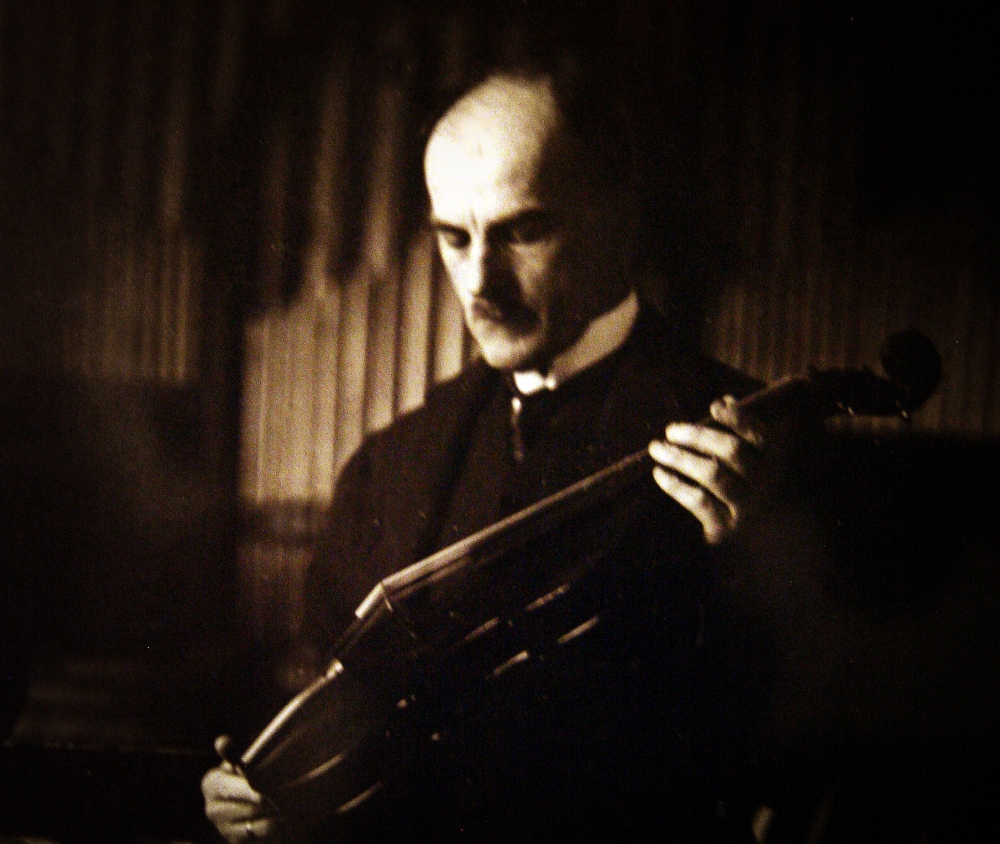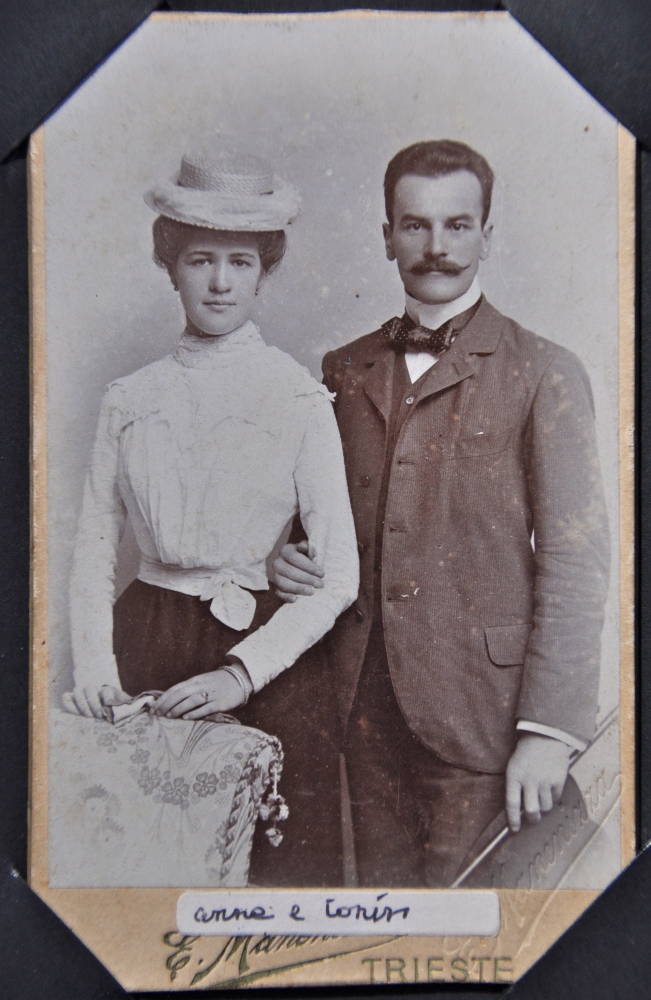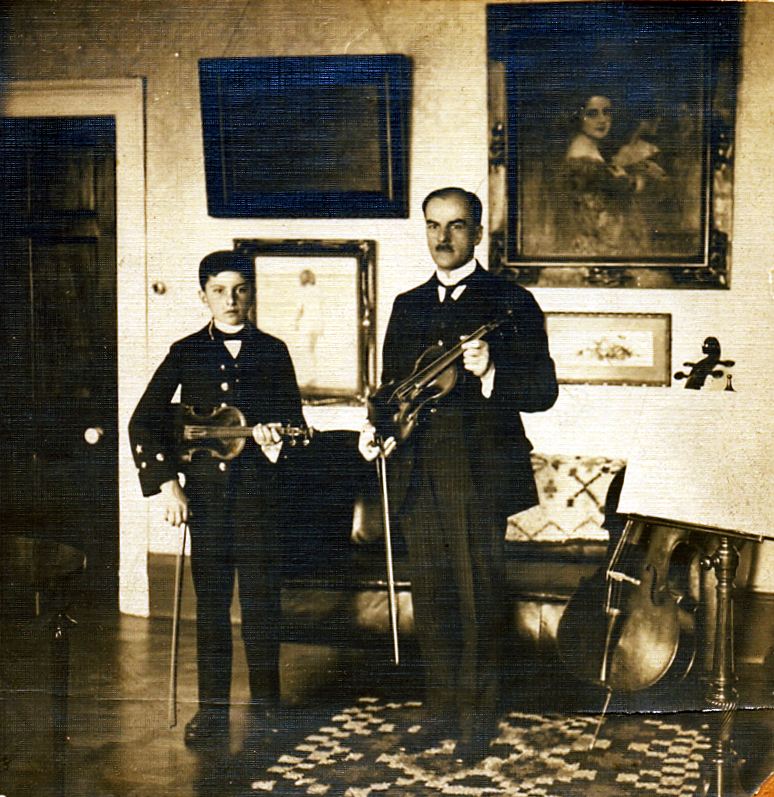Antonio Antoncich
This is the story of how Antonio Antoncich assembled one of South America’s greatest collections of stringed instruments – in his Valparaiso, Chile, house

Antonio Antoncich Craglietto was born on November 22, 1868, in Croatia. But, by the time of his death, in 1955, Antoncich had amassed
“one of the greatest collections ever of stringed instruments in South America and had contributed significantly to the development of European musical culture in Chile.” – Jason Price, Antonio Antoncich, Tarisio.com
Antoncich left his home in the Croatian fishing village, Veli Losinj, and emigrated to Chile in 1892. He went to work in the mining industry, settling first in Iquique and then in Antofagasta in the north of the country.
At that time Chile was responsible for nearly 80% of the world’s nitrates giving it a monopoly over the production of this ‘white-gold’. It was a lucrative business and Antoncich, who rose quickly to become a director of a large mining firm, enjoyed the fruits of the Chilean nitrates boom during the early part of the 20th century.
Antonich’s home became the unofficial concert hall of Valparaíso and, with very few exceptions, put on live concerts every Monday evening between 1918 and 1937 – Jason Price, Antonio Antoncich, Tarisio.com
He became friends with Pascual Baburizza Antoncich, a fellow Croat who, In 1910, founded a mining company of his own, Baburizza & Co, which would later control 30% of Chile’s nitrate mines. Antoncich owned shares in the Baburizza company and this would prove to be a major part of his financial success. The two remained friends throughout their business and personal lives.
But Antoncich’s passion was music – not mining. He was a wealthy man and settled in Valparaiso in 1914 while still working in the nitrate business. He bought his first house at Miramar 410 in Cerro Alegre, a region of the city where many well-to-do immigrants lived including English, Germans, and Croats and Slavs.

Antoncich and his sister Costanza in Trieste (Courtesy of the Antoncich family)
Valparaíso experienced rapid growth during its golden age, as a magnet for European immigrants, when the city was known by international sailors as “Little San Francisco” – it nestled in a bay surrounded by 48 hills.
Miramar 410 was five minutes from where his friend Baburizza lived. His former home, Palacio Baburizza in Cerro Alegre, now serves as one of Valparaiso’s principal art museums. Baburizza left his extensive art collection to the city.
In 1918 Antoncich began hosting weekly concerts at his home. These rapidly became a fixture for many of the local European immigrants who had an appetite for hearing classical music. These were the days before recording devices and so live music was the only way of experiencing music.
“Soon Antonich’s home became the unofficial concert hall of Valparaiso and, with very few exceptions, put on live concerts every Monday evening between 1918 and 1937.”
In addition to recitals, Antoncich started to travel to Europe to buy coveted instruments, eventually putting together the largest collection of privately owned classic music instruments in South America. Antoncich retained an interest in and affection for European culture – his suits were tailored in London, and he read English news magazines. “Don Antonio was a formal and elegant gentleman, in a shirt with a starched collar, gold chain watch across the chest, gray leggings, black ankle boots, walking stick and hat.”
In time, Antoncich’s Monday recitals would attract internationally-renowned stars – who often came to get an opportunity to play the exceptional collection of instruments he had put together. These instruments, some of the finest being crafted in Europe at the time, were bought during frequent trips to London in the 20s and 30s.
The recitals and Antoncich’s role as a patron of music in the city began attracting attention from local civic leaders and from the press:
“Many music-loving people would go to walk in the street, in front of the living room windows to listen. The street of Miramar, with a steep slope, made it possible to hear from the windows that opened for the occasion, so that it could be heard from outside and at the same time to avoid the confinement of the room. Numerous German and foreign neighbors came with their shawls, and they had their favorite places. The silence of the hill, which continues to this day, was even greater then, barely disturbed by the slow tread of the horses on the stone pavement.” – El Mercurio,Valparaiso (Monday, January 31) 1927

Antoncich with one of his sons in his home in Valparaíso (Courtesy of the Antoncich family)
“Like many collectors, part of Antoncich’s enjoyment was social. He liked to rub elbows with important musicians and made his home a destination for European musicians on tour.” – José Pérez de Arce, “Don Antonio Antoncich, musical philanthropist. Valparaíso c. 1920,” Resonances, no. 23 (November 2008)
He was devoted to his music, his recitals and his instruments. In time, and as he aged, this vast and coveted collection of instruments was something of a burden for Antoncich.
“When he came home from work he would go up to the room with the violins, take them out one by one, and place them in order on the bed. He would open the box, take out the instruments, and look at them for a while. He cleaned it with suede leather. And immediately he would tune it and put it away and continue with the other.” – José Pérez de Arce, “Don Antonio Antoncich, musical philanthropist. Valparaíso c. 1920,” Resonances, no. 23 (November 2008)
Antoncich died aged 87 in 1955.
Contact Info
Owner
Email: mulhollandjohnf@gmail.com
(Click email address to open)
For sale inquiries contact:
Conrado González
Jefe Comercial de Valparaíso | Nuevos Negocios
Email: conrado.gonzalez@colliers.cl
(Click email address to open)
Mobile +56 9 7644 0630
El Regidor 66, piso 12 | Las Condes – Santiago | Chile
 HOME
HOME